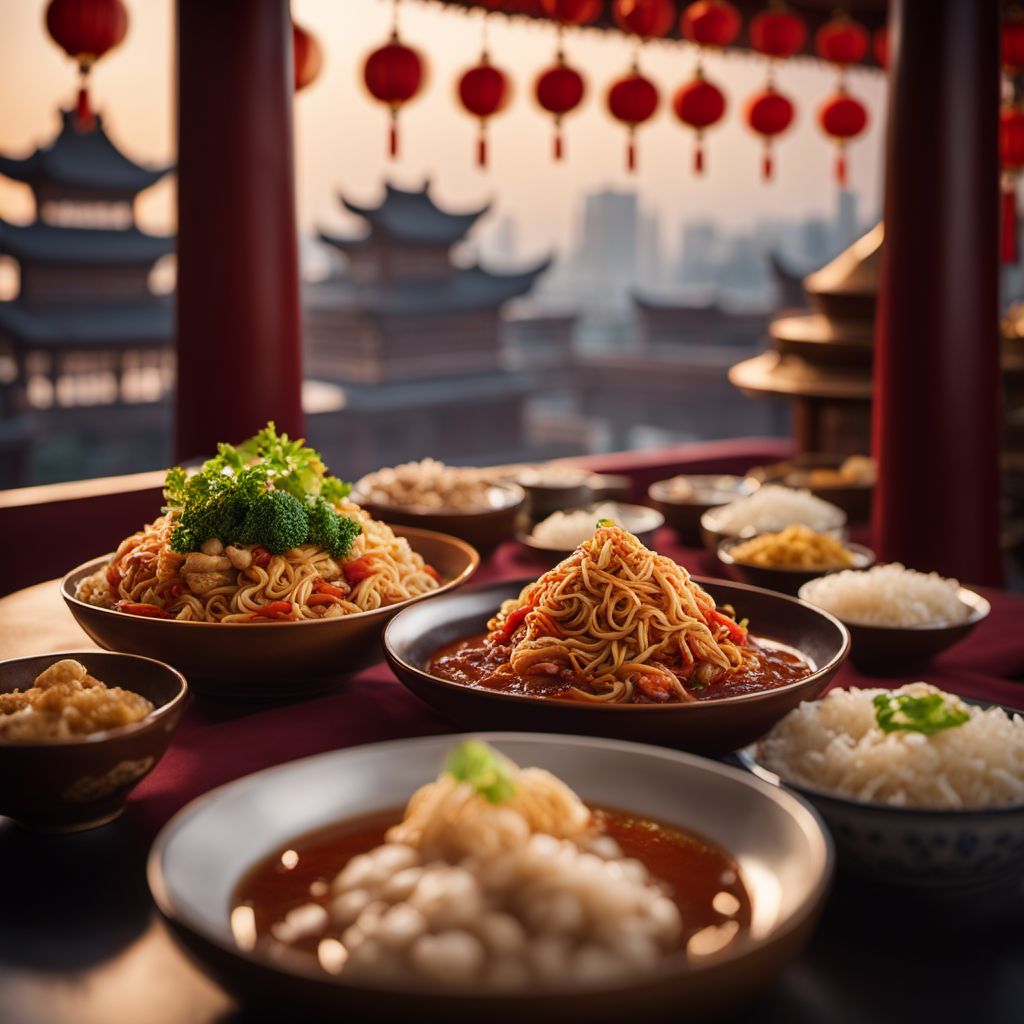
Cuisine
Chinese imperial cuisine
Chinese imperial cuisine is known for its emphasis on the use of rare and exotic ingredients, such as shark's fin, bird's nest, and abalone. It is also characterized by its use of complex and elaborate cooking techniques, such as double boiling and braising. The cuisine is often described as refined and elegant, with a focus on presentation and aesthetics.
Typical ingredients
Shark's fin, Bird's nest, Abalone, Sea cucumber, Lobster, Crab, Pork, Chicken, Soy sauce, Oyster sauce, Shaoxing wine
Presentation and garnishing
Chinese imperial cuisine is typically presented in individual portions, with an emphasis on presentation and aesthetics. Garnishes are elaborate and ornate, with a focus on highlighting the beauty and rarity of the ingredients.
Chinese imperial cuisine is also known as palace cuisine, after its association with the imperial courts of China. The cuisine is often associated with wealth and status, and is considered a symbol of luxury and indulgence.
More cuisines from this region...
History
Chinese imperial cuisine has a long history dating back to the Han Dynasty (206 BC-220 AD). It originated in the imperial courts of China, where the chefs developed a cuisine based on the ingredients available in the region. Over time, Chinese imperial cuisine has been influenced by neighboring cuisines, particularly those of Jiangsu and Zhejiang provinces. Today, Chinese imperial cuisine is enjoyed by the wealthy and elite throughout China and around the world.
Cultural significance
Chinese imperial cuisine is closely associated with the imperial courts of China, and is often served at banquets and special occasions. The cuisine is also known for its association with rare and exotic ingredients, which are highly valued for their rarity and delicacy. Chinese imperial cuisine is considered a symbol of wealth and status.
Health benefits and considerations
Chinese imperial cuisine is considered to be luxurious and indulgent, with a focus on rare and exotic ingredients and complex cooking techniques. However, some dishes may be high in fat and sodium, so it is important to consume them in moderation.
Chinese imperial cuisine recipes Browse all »
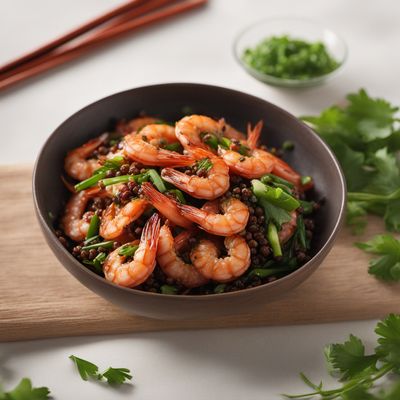
Chinese Imperial Peppered Shrimps
Imperial Dragon Shrimps: A Regal Twist on Peppered Shrimps
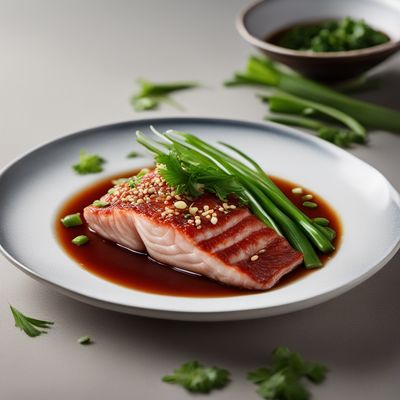
Chinese Imperial-style Steamed Red Snapper
Imperial Dragon's Delight: Steamed Red Snapper Fit for Royalty
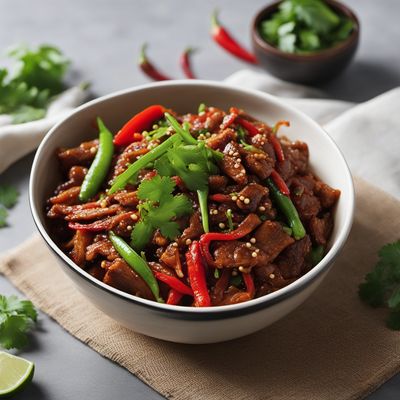
Chinese-style Spicy Pork Stir-Fry
Imperial Fire: A Fiery Chinese Twist on Spicy Pork Stir-Fry
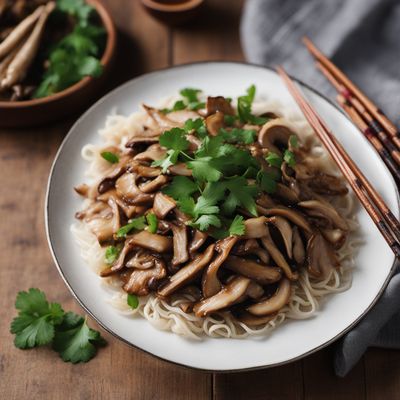
Imperial Chicken and Mushroom Stir-Fry
Regal Delight: Imperial Chicken and Mushroom Stir-Fry

Chinese Imperial Conch Salad
Imperial Harmony: Chinese Conch Salad
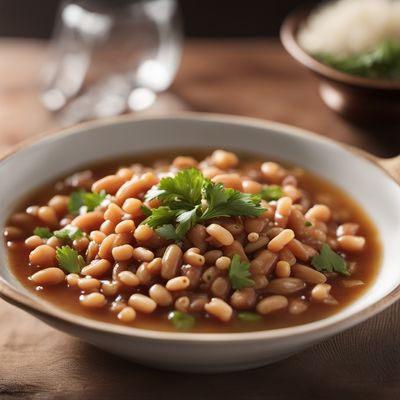
Chinese Imperial Fagioli alla Maruzzara
Imperial Bean Delight: A Fusion of Italian and Chinese Flavors
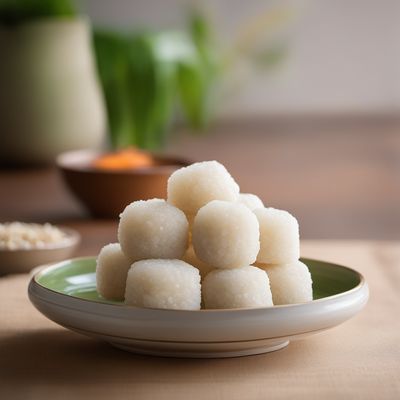
Chinese Imperial Glutinous Rice Balls in Sweet Ginger Soup
Imperial Delicacy: Sweet Ginger Glutinous Rice Balls

Chinese Imperial Almond Cookies
Imperial Delights: Chinese Almond Cookies Fit for Royalty
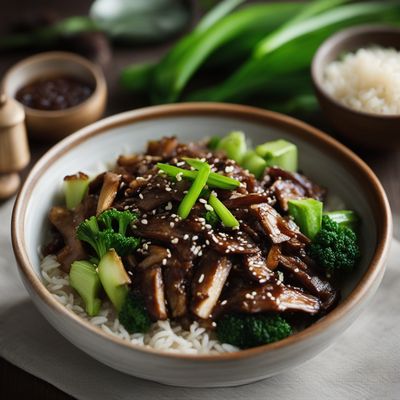
Chinese Imperial Calentado
Imperial Harmony: A Fusion of Colombian Calentado and Chinese Imperial Cuisine
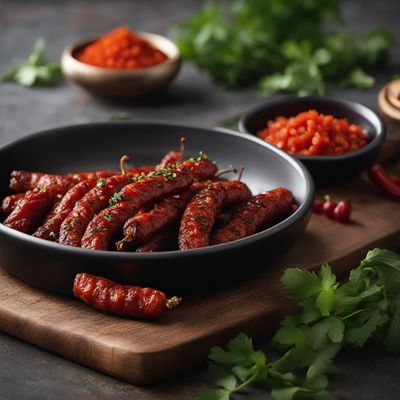
Grilled Chorizo with Chinese Imperial Twist
Imperial Sausage Delight: Grilled Chorizo with a Chinese Flair

Chinese Imperial Egg Sandwich
Golden Egg Delight: A Chinese Imperial Twist on the Classic Sandwich

Chinese Imperial Halo-Halo
Imperial Delights: A Fusion of Chinese Elegance and Filipino Sweetness